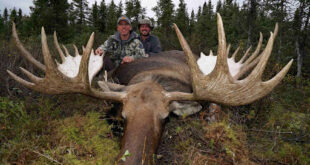Hunting has been around since the dawn of man. It has been the primary source of survival for many civilizations, used as a rite of passage, a necessity for fur, cultural beliefs, food and more. Nowadays, hunting is mostly done for sport. And, for most countries, hunting has become big business. In fact, just a few years ago in the United States, hunting had generated more revenue than Google. If that little nugget of information piqued your interest, then check out these other hunting facts from around the world that you may not have known about.
 Hunting Revenue
Hunting Revenue
It is estimated that European hunters generate over 16 billion Euros annually. This figure includes things like hunting licenses, firearms, ammo, hunting or sporting equipment, and travel. In the United Kingdom, over 8,000 jobs have been created and are dependent on fox hunting.
As of 2012, U.S. hunters have paid over $7 billion in taxes and fees, with another $38 billion spent on hunting gear. To break it down further, the average American hunter pays roughly $2,484 dollars annually on the sport of hunting. This also translates into over 680,000 jobs in the U.S. due to hunting-related revenue.
In Australia, it is estimated that hunters generate over $1 billion dollars which is a significant boost for the economy. The State of Victoria sees at least $40 million dollars a year in contributions from hunters.
In South Africa, roughly R 2.1 billion was generated from trophy hunters and R 7.7 billion from the entire hunting industry.
Number of Hunters
Despite the increased regulations, licenses and other hunting associated fees, the number of hunters continues to remain high across the globe. In America, there are over 38 million hunters and fishers, with female hunters on the rise. In fact, more people hunt and fish than play America’s pastime, baseball.
Europe has an estimated 7 million hunters and has also seen a rise in female hunters. Nordic countries seem to have seen the greatest boom in women hunting over the last few years. In Norway, 12% of all hunters are women, which is slightly above the 10% in Germany. These countries have seen a 50% to 60% increase in the number of women over the last decade. The UK and Austria (7.5%) have also seen a slight uptick in female hunters. Of the estimated 350,000 hunters in the UK, roughly 6.5% of them are women.
Australia is estimated to have roughly 300,000 hunters participating annually.
Animals
Depending on the country, as well as the continent, there are different animals hunted for different reasons. From food to trophies, the following is a list of popular wildlife to hunt and the regions they are popular in:
- Africa has seen a boom in trophy hunting over the last several years with the most popular animals being the lion, elephant, white rhinoceros, leopard, and buffalo.
- In the UK, the longstanding tradition of hunting fox is still hugely popular. However, in 2005, hunting foxes with hounds was banned, just a few years after Scotland implemented the same ban. Australia, which also hunts fox, still allows some fox hunting with dogs.
- Also in Australia, rabbits are considered a problematic. Hunters are encouraged to hunt these pests. Other popular animals to hunt in Australia include kangaroos, deer, pigs, feral cats and goats.

- In Japan, Norway and Iceland, whales are highly popular, despite the global concern for their survival. It has been estimated that roughly 1,500 whales are hunted and killed each year between these three countries.
- America has a wide range of animals that are popular to hunt, mostly depending on the state or region of the country. In the Northwest, duck and waterfowl are the most hunted wildlife. While, across the country, deer is the most popular animal to hunt in eastern states like Pennsylvania. Other popular animals hunted in America include bear, bison, caribou, elk, moose, rabbit, turkey and beavers.
Hunting’s Positive Impact
As you can see, hunting for sport and food is still a massively popular activity throughout the world. But, even more than popularity, hunting has created economic booms in different countries through generating billions of dollars in revenue and supporting thousands of jobs. Additionally, despite some of the misconceptions about hunting, many previously endangered species have seen a resurgence due to fair and regulated hunting laws throughout the world.
Author
 Jim Carson
Jim Carson
Jim Carson is passionate about life and loves to write about all things in the world, especially related to different products. He currently writes for theguidr.com and enjoys sharing information and educating those about new things. In his spare time, he enjoys riding his bike and walking the dog.
 www.GunsandOptics.com Tactical & Hunting Gear Review
www.GunsandOptics.com Tactical & Hunting Gear Review






